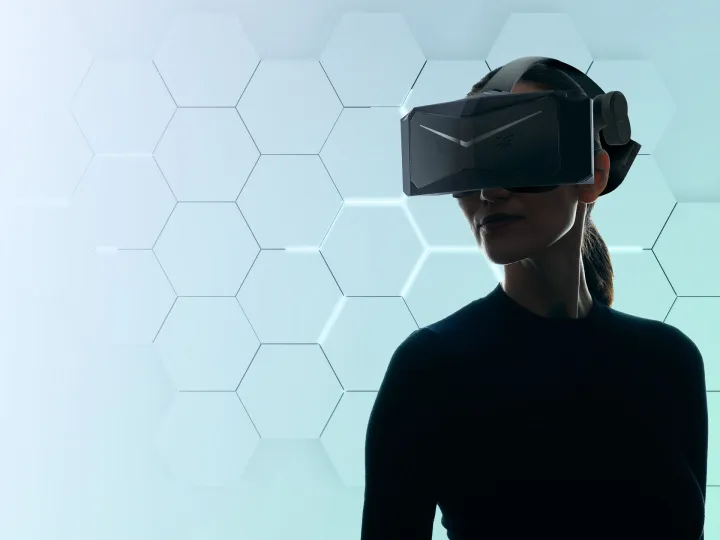Immersive Screens For SIm Racing
The Pursuit of True Racing Realism
Home racing simulators have moved far beyond casual gaming, evolving into sophisticated training tools powered by high-performance hardware. The key to their allure lies in visual immersion; the more convincing the view, the more authentic the driving feels. Today’s setups rely heavily on premium VR headsets, ultra-wide screen computer monitors, or carefully aligned game computer monitors to create an experience that rivals reality.
For enthusiasts chasing the sensation of threading corners at Spa or managing throttle on the Nordschleife, the goal is not just to play, but to be there. Understanding the visual technology that drives that illusion helps turn an enjoyable pastime into a genuinely thrilling motorsport simulation.
The Power of Ultra-Wide Displays
Among desktop options, the ultra-wide screen computer monitor has become the foundation of serious sim racing setups. With expansive 21:9 or 32:9 ratios, these curved displays replicate the breadth of human vision far more naturally than traditional 16:9 panels. A single ultra-wide game computer monitor immerses the driver in a sweeping field of view, making cockpit environments feel authentic rather than observed from afar.
Technical details matter; a 144Hz refresh rate paired with QHD or 5K resolution ensures both sharpness and fluidity. Screen curvature—often 1000R or 1800R—dictates how enveloping the experience feels. Deeply curved panels draw the player in, reducing visual distortion at the edges and enhancing the illusion of speed. For racers short on space, a top-tier ultra-wide display remains a clean and powerful way to achieve realism without excessive hardware.
Expanding Vision with Triple Screens
Triple-screen configurations have long been the benchmark for competitive immersion. By surrounding the driver with three game computer monitors, the setup recreates the natural motion of looking left or right during a race. Peripheral awareness becomes instinctive; drivers can glance toward an apex or mirror as in a real car. The result is a panoramic 180-degree view that transforms racing into a deeply spatial experience.
Calibration is critical: field of view settings within the simulator must align precisely with the physical angle of each screen, while bezels should be minimised for seamless continuity. Although this approach requires ample desk space and significant GPU power to render three high-resolution outputs, the reward is a sense of realism unmatched by single displays. For serious competitors, triple-screen systems remain the gold standard of flat-panel immersion.
The Virtual Reality Revolution
Then there is the transformative experience of the VR headset. With modern devices such as the Meta Quest 3, Pimax Crystal and Varjo Aero, virtual reality erases the boundary between player and machine. Slip one on and you’re not merely viewing the track—you’re inside it. Every glance, tilt and head movement corresponds directly to cockpit motion. Depth perception adds an entirely new layer of realism, letting drivers judge distance and cornering lines with uncanny accuracy.
High refresh rates and low latency are essential to maintaining comfort and preventing motion sickness, while high pixel density—often exceeding 2000 pixels per eye—ensures visual clarity. Advanced features like foveated rendering focus GPU power where your eyes are looking, boosting performance without sacrificing quality. For many, the VR headset represents not just the future of sim racing, but the closest possible bridge between virtual and physical motorsport.
Finding the Perfect Balance
Ultimately, the ideal setup depends on personal preference and priorities. A high-spec screen computer monitor provides accessible immersion with minimal fuss, ideal for clean, compact rigs. Triple game computer monitors deliver unrivalled peripheral vision and accuracy for competitive racing. The VR headset, meanwhile, offers unmatched depth and realism for those willing to embrace full sensory immersion.
Each approach has its technical demands—powerful GPUs, stable frame rates and meticulous calibration—but all share the same ambition: to dissolve the line between simulation and reality. The more effectively your visual hardware draws you into the moment, the closer you come to experiencing the thrill of real motorsport. Whether through the curve of a display or the lens of a headset, the true magic lies in forgetting the equipment entirely and simply racing.
About Us
Race@home launched in 2020, offering immediate shipment of high-end sim hardware to frustrated customers. Our acclaimed LowRider 5DOF and new LowSlider 6DOF platforms prioritise compact excellence.
Contact Us
raceathome@gmail.com
+441163326679
Leicester, United Kingdom
WhatsApp
Instagram
Facebook
TrustPilot
YouTube

